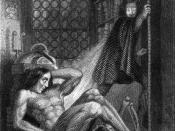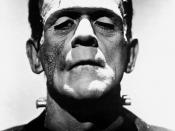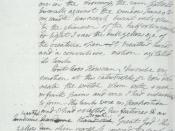Important Note: If you'd like to save a copy of the paper on your computer, you can COPY and PASTE it into your word processor. Please, follow these steps to do that in Windows:
1. Select the text of the paper with the mouse and press Ctrl+C.
2. Open your word processor and press Ctrl+V.
Feminist Reading of Frankenstein
When reading Frankenstein by Mary Shelley, one cannot help but notice that the women characters seem to have little substance compared to the male characters. This may have been caused by the time period in which she wrote: one in which females were considered inferior to males. This difference between the sexes can be looked at using a variety of different perspectives. Johanna M. Smith, a professor at the University of Texas at Arlington, discusses this issue using feminist eyes in her essay entitled "'Cooped up': Feminine Domesticity in Frankenstein." The main points in Professor Smith's essay are that the female characters are there only to reflect the male characters, and that the Frankenstein family has a weird style of living, which she describes as a "bookkeeping mentality" (Smith 279).
Smith begins her essay by looking at the historical factors that may have contributed to this seemingly sexist book. Shelley, writing in the first half of the 19th Century, was in a period in which a woman "was conditioned to think she needed a man's help" (Smith 275). In the novel itself, no women speak directly. The book has three basic narrators: Robert Walton, Victor Frankenstein, and Frankenstein's monster. The female characters are very weak in this novel, especially Elizabeth, Victor's cousin/fiancé (no they aren't from Arkansas). She is portrayed as the perfect woman, especially after Victor's mother, Caroline dies. She takes the place of the mother figure in the...


